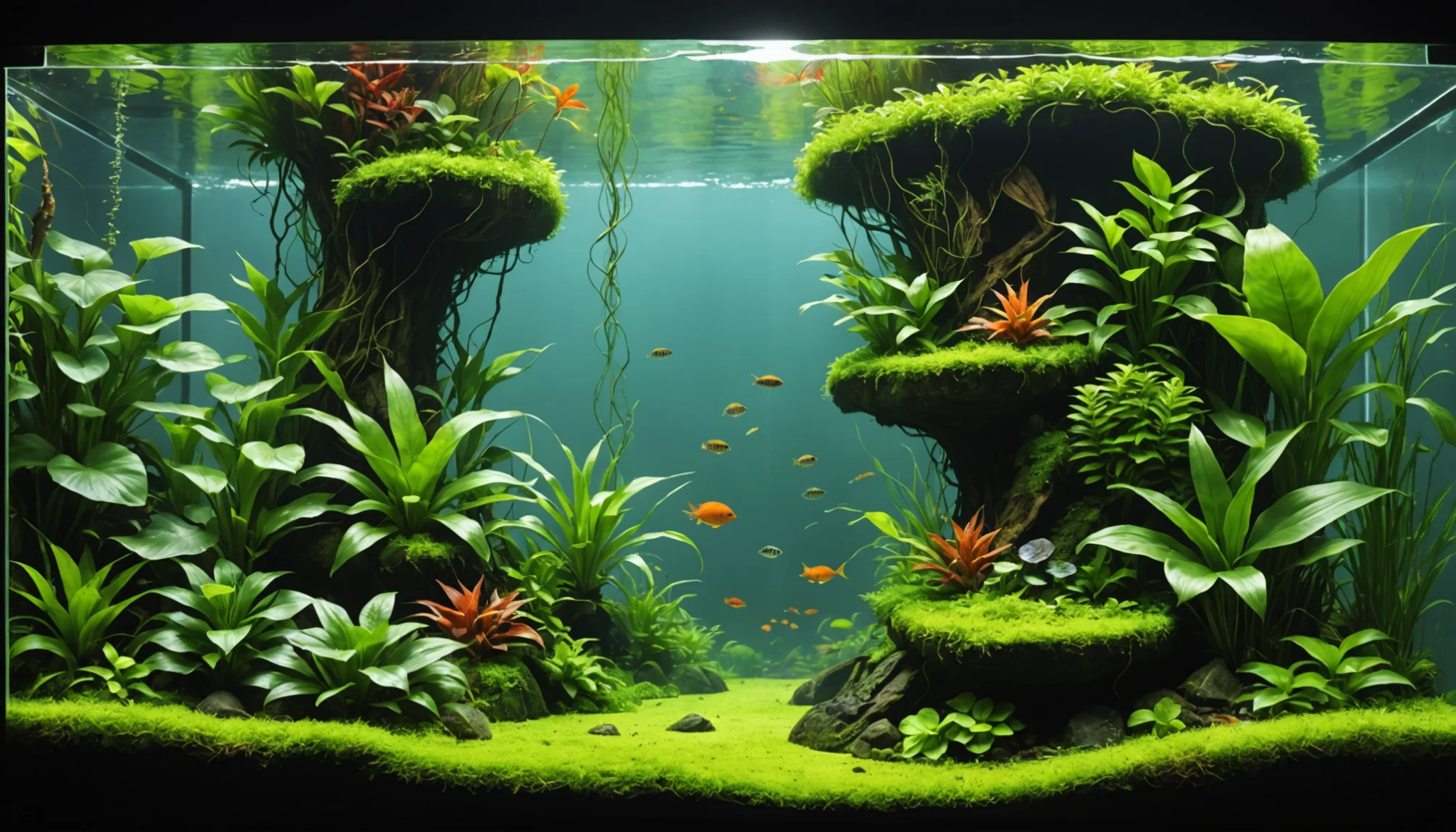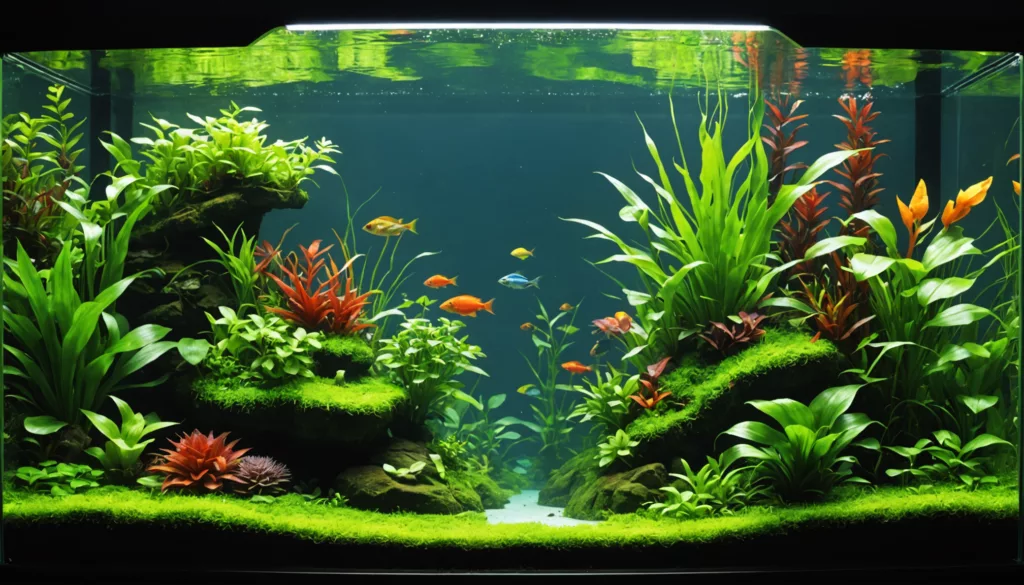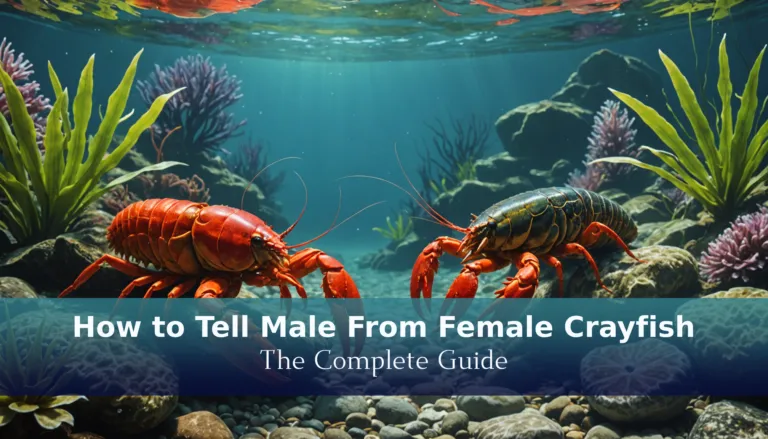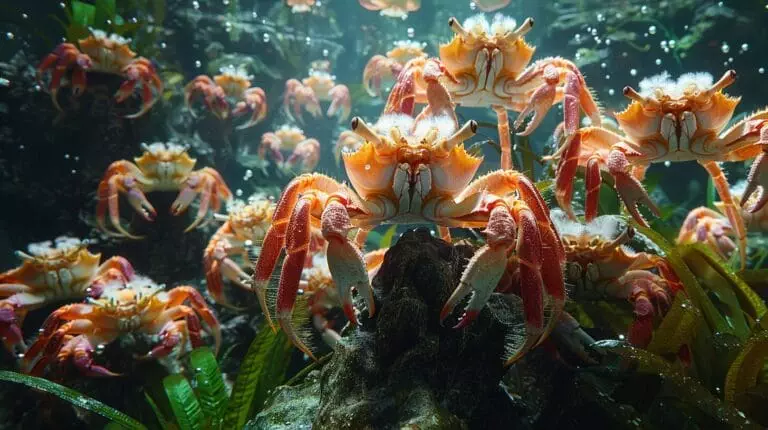Imagine a vibrant world where lush greenery meets the shimmering water of your aquarium! Semi aquatic plants for aquariums can transform a simple tank into a stunning paludarium, creating a perfect blend of land and water. These adaptable plants not only enhance the beauty of your aquatic environment but also provide essential benefits, like improving water quality and offering hiding spots for shy fish.
Understanding how to choose and care for these unique plants is crucial. Without the right knowledge, you might end up with wilting greenery or uninviting space for your fish friends. In this article, we’ll explore the best semi aquatic plants that thrive both submerged and emersed, share tips for maintaining their health, and address common challenges you might face. Get ready to dive into the colorful world of semi aquatic plants and discover how to bring your aquarium to life!
What are Semi Aquatic Plants for Aquariums?

Semi aquatic plants are special types of plants that can grow both in water and on land. Unlike fully aquatic plants that stay completely submerged, semi aquatic plants thrive partly above the water surface. This unique ability allows them to adapt to changing water levels, a common feature in many aquatic habitats.
Many aquarium enthusiasts choose semi aquatic plants for their beauty and distinctive characteristics. They add lush greenery and vibrant colors to aquariums and paludariums while supporting the ecosystem within the tank.
Understanding Semi Aquatic Plants: Between Land and Water
Semi aquatic plants have features that help them adapt to both environments. For instance, plants like lucky bamboo and pothos can have their roots in water while their leaves reach above the surface. This design allows the plants to absorb nutrients from the water and utilize sunlight for photosynthesis. With strong roots, they help stabilize the soil and prevent erosion. This versatility makes semi aquatic plants an excellent option for aquarium setups, where water levels can fluctuate.
Benefits of Including Semi Aquatic Plants in Your Aquarium
Adding semi aquatic plants to an aquarium offers several advantages. Here are some key benefits:
- Aesthetic Appeal: These plants enhance the visual beauty of any aquarium or paludarium. Their diverse shapes and colors create a vibrant underwater landscape.
- Water Quality Improvement: Semi aquatic plants play an important role in filtering water. They absorb excess nutrients like nitrates, which helps maintain a healthier aquatic environment.
- Habitat for Wildlife: These plants provide shelter and breeding grounds for various aquatic creatures. Fish and other organisms find refuge among the leaves and roots, promoting a balanced ecosystem.
Source: Wikipedia
How to Distinguish Semi Aquatic Plants from Fully Aquatic Varieties
It is essential to identify semi aquatic plants compared to fully aquatic plants. Semi aquatic plants can grow above the water line, exposing part of their structure. In contrast, fully aquatic plants remain submerged and do not have this ability. Examples of semi aquatic plants include marsh marigolds and certain types of ferns. Recognizing these differences can help hobbyists select the right plants for their aquariums.
Top Picks: Semi Aquatic Plants for Your Paludarium

The Best Dwarf Varieties for Small Aquariums
Selecting the right plants for small aquariums is vital for a healthy ecosystem. Dwarf varieties are perfect because they occupy less space while adding beauty. Here are two excellent options:
- Anubias barteri var. nana: This hardy plant thrives in low light, making it perfect for beginners. Its dark green leaves contrast beautifully with the water, enhancing the aquarium’s look. Anubias requires minimal care, making it a great choice for small tanks.
- Dwarf Hairgrass: Known for creating a lush carpet effect, this plant grows low and spreads quickly. It adds a natural touch to your paludarium. Dwarf Hairgrass prefers moderate to bright lighting and, when planted densely, provides a welcoming habitat for small fish and shrimp.
These dwarf varieties beautify the aquarium and help maintain water quality by absorbing excess nutrients, making them valuable additions for both aesthetics and function.
Plants That Thrive Submerged or Above Water
Semi aquatic plants are versatile, flourishing both underwater and above it. Here are two standout choices:
- Java Fern (Microsorum pteropus): This plant grows well fully submerged or with its leaves above water. Java Fern is robust and does not require special lighting, fitting various setups. It easily attaches to rocks and driftwood, enhancing the natural look.
- Peace Lily (Spathiphyllum spp.): This exceptional plant can grow in water or as an emersed plant in paludariums. Peace Lily features beautiful white flowers, adding elegance. It thrives in indirect light and helps filter water, promoting a healthier aquatic environment.
These adaptable plants offer unique aesthetics, making them excellent choices for creating dynamic and engaging paludarium scenes.
Creating a Stunning Paludarium Scene with Semi Aquatic Plants
Designing a visually appealing paludarium involves balancing different elements. Here are tips to achieve a stunning scene:
- Layering: Utilize plants of varying heights and textures. Taller plants like Peace Lily can form a backdrop, while smaller ones like Dwarf Hairgrass can fill the foreground, creating depth and interest.
- Incorporate Hardscape: Adding driftwood or rocks enhances the natural look of the paludarium. These structures provide hiding spots for fish and shrimp and serve as anchor points for plants like Java Fern.
- Consider Color Variety: Mixing plants with different shades of green and textures adds visual intrigue. Pairing the dark green foliage of Anubias with the bright green of Dwarf Hairgrass creates a striking contrast.
By carefully selecting and arranging these semi aquatic plants, a harmonious and beautiful paludarium can be created, mimicking natural ecosystems.
References
Care and Maintenance of Semi Aquatic Plants

Semi-aquatic plants add beauty to aquariums and paludariums. To keep these plants healthy, it is crucial to understand their care and maintenance needs. This section discusses key factors such as substrate, lighting, water conditions, temperature preferences, and trimming techniques.
Substrate and Lighting: Key Factors for Growth

Substrate
The right substrate is vital for semi-aquatic plants. A nutrient-rich substrate retains moisture and provides essential nutrients. Combining soil and gravel works well because it allows for drainage while supporting plant growth.
- Ideal Substrates:
- Soil mixed with gravel
- Peat-based soil for moisture retention
- Fast-draining potting soil for better aeration
Lighting
Lighting is important for photosynthesis, enabling plants to convert light into energy. Semi-aquatic plants need about 10-12 hours of light daily for optimal growth. LED lights are often preferred, as they use less energy and produce less heat.
- Lighting Tips:
- Use LED lights for efficiency.
- Position lights to cover all plants equally.
- Monitor light duration to reduce algae growth.
Water Conditions and Temperature Preferences

Water Conditions
Most semi-aquatic plants thrive in water with a slightly acidic to neutral pH, ideally between 6.5 and 7.5. Regular water changes are essential to maintain these conditions. Clean water promotes healthy growth and supports aquatic life.
- Monitoring Water Conditions:
- Use a pH meter to check levels.
- Change 10-15% of the water weekly to keep it fresh.
- Avoid sudden pH changes to prevent plant shock.
Temperature
Stable water temperature is crucial for the health of semi-aquatic plants. They generally prefer temperatures between 22°C to 28°C (72°F to 82°F). Sudden temperature changes can stress the plants and hinder their growth.
- Temperature Control Tips:
- Use a reliable aquarium heater to maintain warmth.
- Check temperatures regularly with a thermometer.
- Keep the aquarium away from drafts and direct sunlight to avoid temperature spikes.
When and How to Trim Semi Aquatic Plants
Trimming is necessary for semi-aquatic plants’ health. Regular trimming encourages new growth and prevents overcrowding. It is best to trim plants every few weeks.
- Trimming Techniques:
- Use clean, sharp scissors to avoid damaging plants.
- Remove dead or overgrown leaves to promote healthy growth.
- Trim back only one-third of the plant at a time to reduce stress.
By following these care and maintenance guidelines, semi-aquatic plants can thrive in an aquarium or paludarium, creating a vibrant and healthy ecosystem.
Challenges in Growing Semi Aquatic Plants

Growing semi aquatic plants is rewarding but can also present challenges. These unique plants thrive both submerged in water and partially out of water, making them ideal for aquariums and paludariums. However, several common issues can affect their health and growth.
Common Issues Faced by Semi Aquatic Plants in Aquariums
Semi aquatic plants often struggle with several key issues in aquariums:
- Inadequate Lighting: Many semi aquatic plants need proper light to grow. If the lighting is too dim, it can cause slow growth or yellowing leaves.
- Poor Water Quality: Dirty water harms these plants. High waste levels from fish and decaying plant matter lead to unhealthy conditions and stunted growth.
- Improper Humidity Levels: Humidity is crucial for semi aquatic plants. If the air is too dry, plants may wilt or struggle to thrive.
These conditions can result in stunted growth and decay. For instance, Pothos and Peace Lily may not flourish without adequate light or humidity. Regular monitoring helps aquarium enthusiasts maintain healthy plants.
Addressing Rot and Decay: Tips for Healthy Plants
Rot and decay are common problems for semi aquatic plants. To prevent these issues, aquarium keepers can follow these tips:
- Maintain Water Conditions: Good water quality is essential. Regular water changes remove waste and maintain a healthy environment.
- Ensure Good Filtration: A reliable filter keeps the water clean and supports healthy plant growth.
- Avoid Overwatering: Semi aquatic plants do not need constant soaking. Keeping the substrate clean and allowing it to dry slightly can prevent rot.
- Use the Right Substrate: A well-drained substrate is crucial. It should balance moisture without becoming waterlogged.
For example, keeping the substrate clean and ensuring that plants receive adequate care can help them thrive and prevent decay.
Pest Control: Preventing Infestations in Your Paludarium
Pests can threaten the health of semi aquatic plants. Common pests include snails and algae. Here are some strategies to manage these issues:
- Regular Plant Checks: Inspect plants for pests. Early detection can prevent larger infestations.
- Introduce Natural Predators: Adding natural predators, like certain fish, can help control pest populations.
- Maintain Water Quality: Clean water with adequate filtration reduces the likelihood of pest infestations.
- Provide Adequate Airflow: Good airflow helps keep the environment dry, which can deter pests.
By implementing these pest control strategies, aquarium owners can help maintain the health of their semi aquatic plants and enhance their overall aquascaping experience.
Conclusion
In this article, we explored the fascinating world of semi-aquatic plants for your aquarium! These unique plants grow both submerged and emersed, bringing a vibrant splash of color and beauty to your paludarium. We learned about the benefits of including these adaptable plants, how to care for them, and even tackled some challenges you might face while growing them.
Now that you’re equipped with knowledge about the best semi-aquatic plants, like anubias and java moss, it’s time to let your creativity flow! Dive into the exciting adventure of creating a stunning aquatic environment. Keep exploring the wonders of aquatic plants, and watch your aquarium thrive! Happy planting!
FAQs
1. What are the best semi aquatic plants for beginners?
For beginner hobbyists, the Peace Lily is an excellent choice. It thrives both submerged and above water, boasts beautiful white flowers, and can tolerate less-than-ideal conditions. Another beginner-friendly option is Anubias, a tough plant that easily attaches to rocks or driftwood. It flourishes in low light and requires minimal maintenance. Finally, Dwarf Water Lettuce, a floating plant with attractive rosettes of leaves, can significantly enhance water quality by absorbing excess nutrients.
2. How do I keep semi aquatic plants healthy?
To maintain the health of your semi-aquatic plants, provide them with nutrient-rich aquarium soil for optimal growth. Ensure they receive 10 to 12 hours of adequate light daily, with indirect lighting often being the most beneficial. Regularly monitor water quality, aiming for a pH level between 6.5 and 7.5 and a temperature around 72°F to 82°F. Clean water is essential for healthy plant growth. Finally, regularly trim away any dead or dying leaves to promote new growth and prevent overcrowding.
3. Can I grow semi aquatic plants in a terrarium?
Semi-aquatic plants thrive in terrariums due to their adaptability to varying moisture levels. To ensure their success, maintain a balance of humidity with good airflow within the terrarium. Provide bright, indirect light to support photosynthesis without causing leaf burn. Select adaptable species such as Java Fern or Cryptocoryne, which thrive in both wet and dry conditions. By incorporating these elements, you can create vibrant terrariums that mimic natural habitats.





